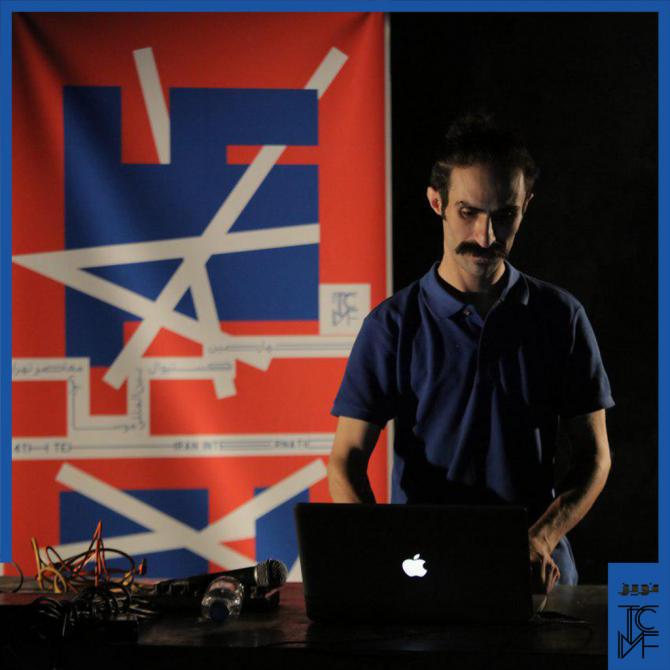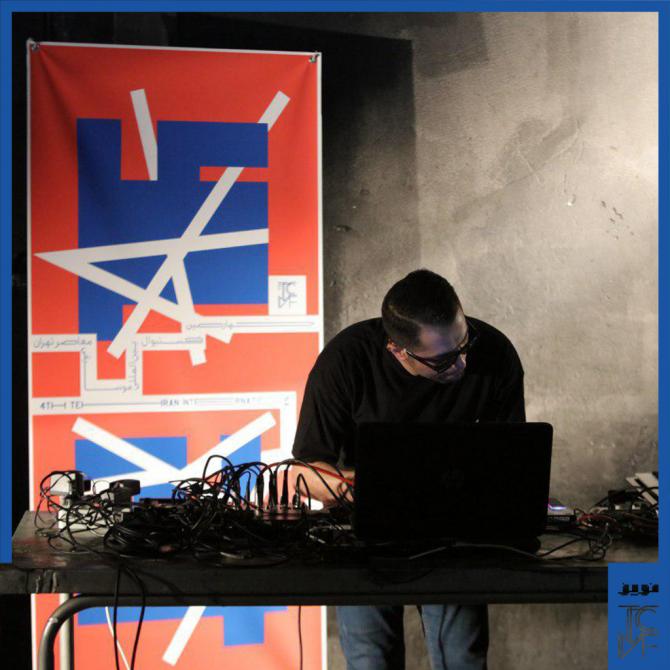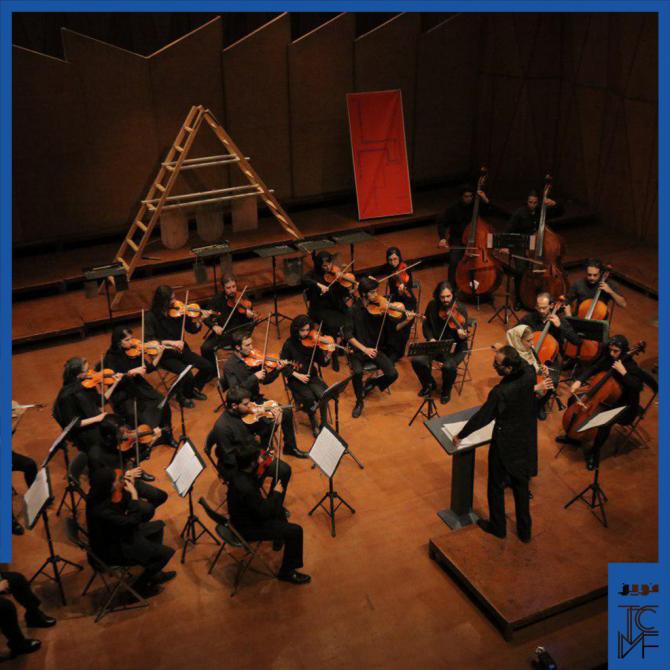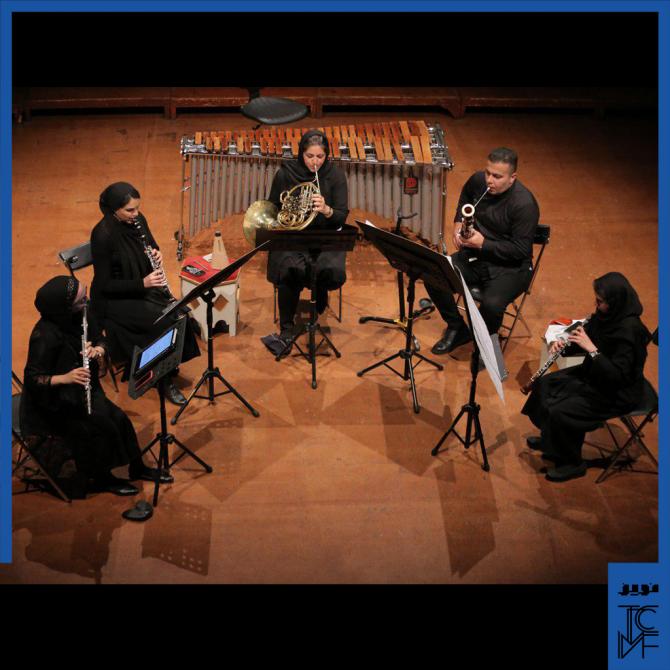آخرین برنامهی بخش الکترونیک جشنوارهی موسیقی معاصر تهران، به اجرای سهیل سهیلی اختصاص داشت. هرچند تغییر چینش سالن و بهبود صدادهی در سالن سبب شده بود تا صداهای محیطی کمتر به گوش برسند، در این اجرا خود این صداهای محیطی تقویتشدهی واقعی جزئی از اجرا بودند.
در حقیقت اگر دو ایدهی این اجرا را بخواهیم بازگو کنیم، یکی بهرهگیری از صداهای تقویت شدهی زنده و واقعی محیط، و دیگری پخش کردن چهار منبع صوتی (بلندگو) در چهار طرف سالن بود. این چهار بلندگو، با پخش کردن خطوط صوتی در چهار نقطهی مختلف و متفاوت، حسی زندهتر به صداهای ضبط شده، غیرانتزاعی و محیطی اجرا میدادند و به نوعی اجرا را مکانمند میکردند. این نگاه بیشباهت به بعضی تجربههای مشابه در حوزهی موسیقی کلاسیک معاصر نبود؛ بهویژه اثری چون »پرسپولیس» زناکیس که در آن نوازندگان با فواصل بسیار دور نسبت به هم میایستند، شنونده در میان نوازندگان پرسه میزند و درنتیجه اثر را بسته به موضعاش به انواع مختلفی میشنود. اجرای سهیلی اما به این وجه مهمِ از پخشایش منابع صوتی کمتوجه بود.
علاوه بر صداهای محیطی، که تقریباً به تمامی متشکل از صدای خودروها و ترافیک خیابان حافظ بودند، از صداهای ضبط شدهی طبیعی –بهویژه صدای پرندگان- نیز استفاده شده بود. این دو شخصیت صوتی با شخصیت سومی هم همراه بودند که برخلاف آن دو انتزاعی و موسیقایی بود؛ یعنی تکهای پرجنبوجوش، الکترونیک و ملودیوار (نه دقیقاً ملودیک)؛ شخصیتی که البته بهدرستی معلوم نبود که چه نسبتی با دیگر شخصیتها دارد. استفاده از صداهای طبیعت محتوای برنامه را به موسیقی نیو-ایج یا حتا بیوموزیک نزدیک میکرد، در حالیکه استفاده از صدای ماشین آن را به همان نسبت از این دو نوع موسیقی دور میکرد.
با این شخصیتپردازی، و جابهجایی مداوم میان صداهای طبیعی با صدای خودروها، از همان دقایق اول تقریباً واضح و زیاده «رو» بود که سهیلی چه روایتی در سر دارد: ماشینها آمدهاند و جای پرندگان را گرفتهاند. حتا همین روایت ساده نیز میتوانست بیانی هنرمندانهتر داشته باشد اگر پرداختاش فکر شده و پیچیدهتر میبود. مثلاً، پخش صداها و جابهجایی مداوم میان صدای پرندگان و خودروها نظم و منطق مشخصی نداشت، در حالی که میشد از ظرفیت بالقوهی چهار بلندگوی سالن برای نظم و معنا دادن به این جابهجاییها، یا بیان گسترش تفوق ماشین بر پرنده استفاده کرد.
اجرای سهیل سهیلی پرداختی ناقص و خام از ایدههایی جذاب بود.
Incomplete spatiality
On the Soheil Soheili’s concert in Tehran Contemporary Music Festival
by Kamyar Salavati
The last program in the electronic section of the Tehran Contemporary Music Festival was the performance of Soheil Soheili. Although rearrangement of the seats in the hall and improvements in the sound quality caused the ambient sounds to be limited, in this performance real amplified ambient sounds were part of the performance.
If we want to note the tow ideas of this concert, one is the using of real, live amplified sounds of the environment, and the other is placing the four speakers at the four corners of the hall. By playing sonic lines from four different spots, these four speakers would give a move live feeling to the recorded, un-abstract and ambient sounds. This approach, to some extent, was similar to certain similar experiences in contemporary classical music; especially to Persepolis by Xenakis, in which musicians stand far from each other and the audience wanders between them and hears the piece differently based on his or her location. Soheili’s performance though had not paid enough attention to this aspect of distributing audio sources.
In addition to ambient sounds, almost exclusively consisted of traffic noises of Hafiz street, natural recorded sounds -especially bird songs- were used. These two personalities were accompanied by a third one which in contrast was abstract and musical: a dynamic, electronic melody-like (not exactly melodic) piece, which its relation with other parts was not clear. Using natural sounds moved the concert a bit close to a new-age or even bio-music program. while, car and traffic noises moved it away from it.
With this personification, and their constant replacement between bird songs and car noises, it was clear from the first few minutes that what narrative Soheili has thought about: cars have come and replaced the birds. if it would have had a more thought out and complicated expression, even this simple narrative could have had a more sophisticated manifestation. For example, there wasn’t any logic or reason to replacement of sounds and the constant replacement of the bird songs and the car noises. While, the placement of four speakers could be used for regulating and interpreting these replacements or indicating the domination of cars over birds.
Soheili’s performance was a half-baked execution of interesting ideas.
This review is written for The Fourth Tehran Contemporary Music Festival. All rights reserved for www.noise.reviews





